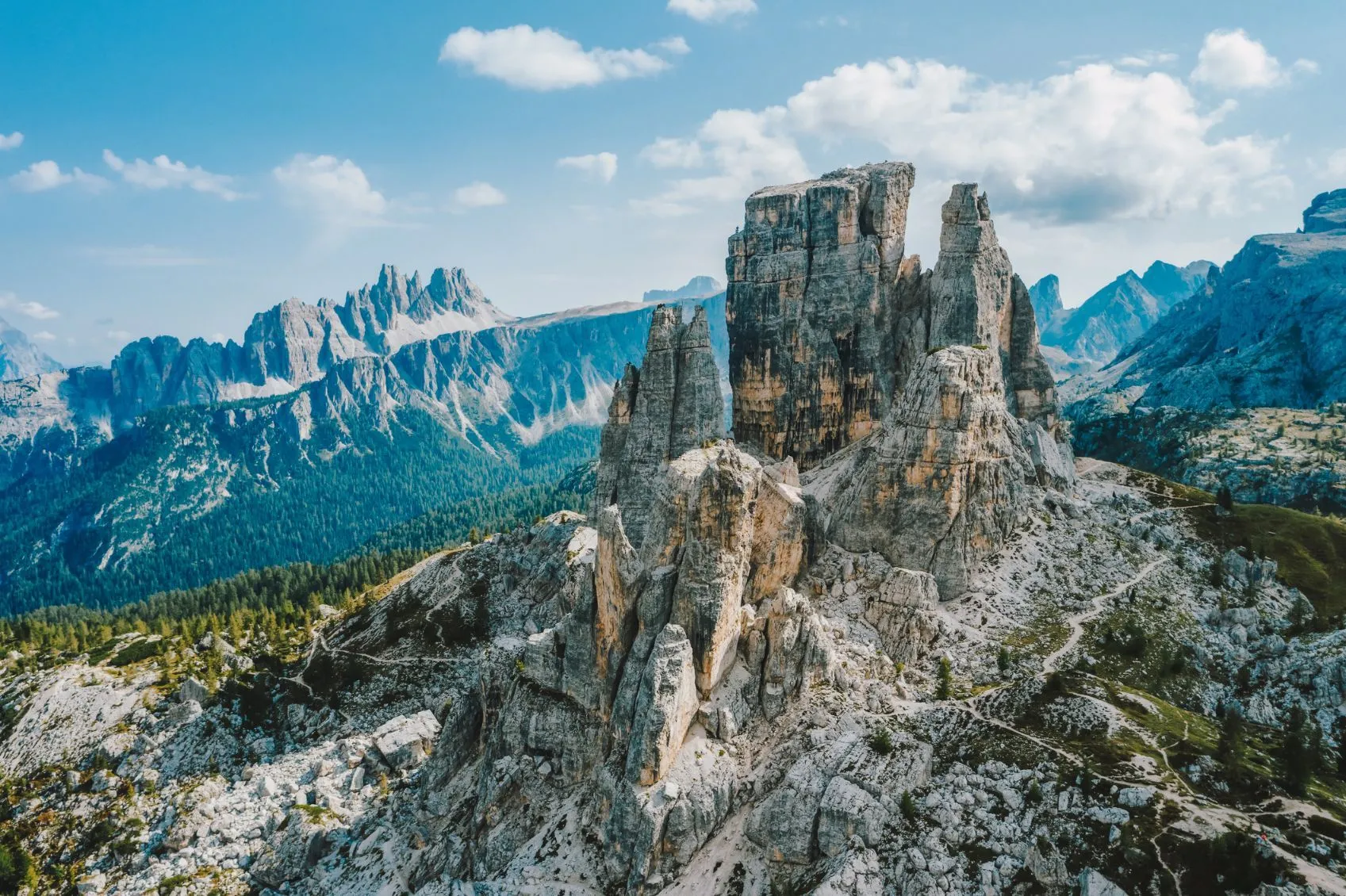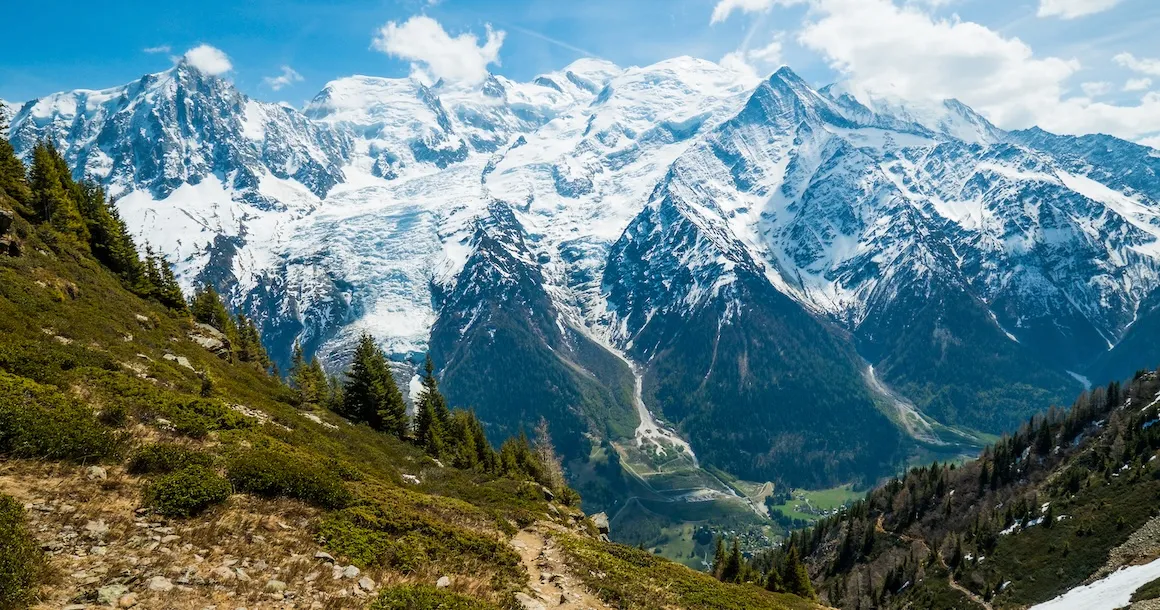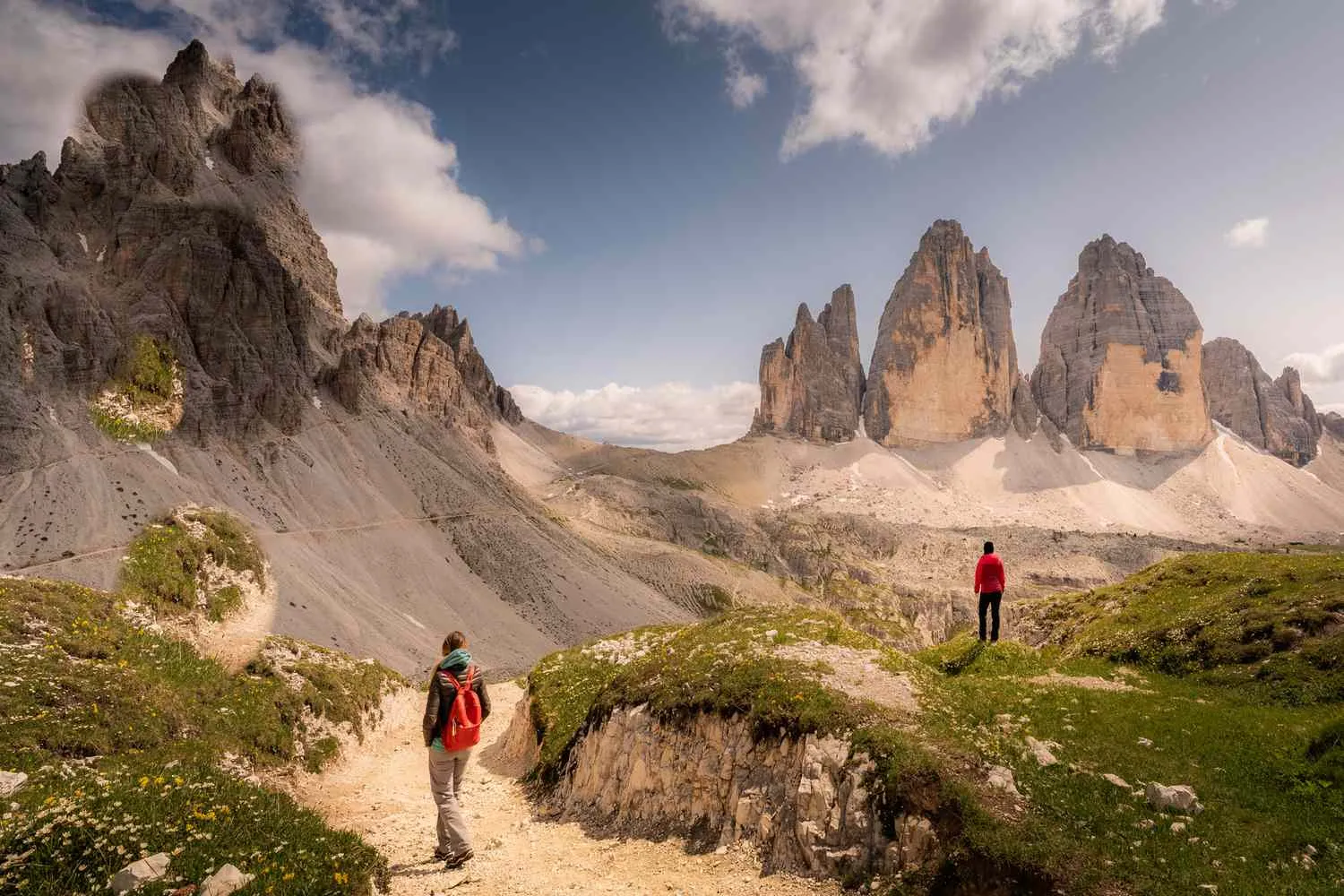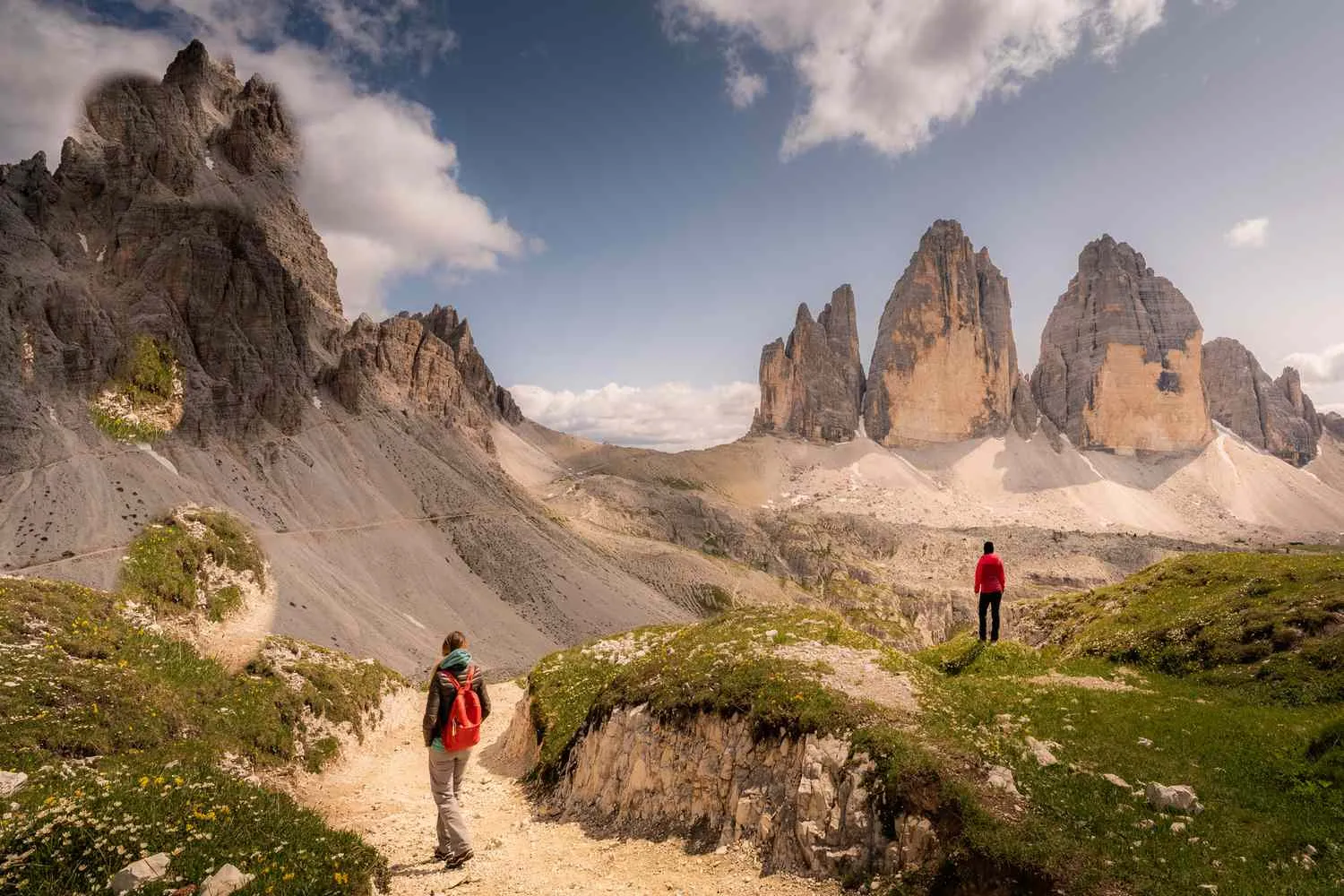Having spent over a decade exploring the European Alps, I've discovered that the best hikes in the Alps offer an unparalleled combination of dramatic mountain scenery, rich cultural heritage, and well-maintained trail infrastructure. From the iconic Mont Blanc circuit to the rugged Dolomites, this comprehensive guide shares my personal experiences and insider knowledge of the most spectacular alpine trails across Switzerland, France, Italy, and Austria. Nature Guests has been your trusted companion for outdoor adventures.
Why the Alps Offer the World's Best Hiking Experience

After hiking extensively across five continents, I can confidently say that the best hikes in the Alps represent the pinnacle of mountain trekking experiences. The European Alps stretch across eight countries, offering an incredible diversity of landscapes, from the limestone pinnacles of the Dolomites to the glacial valleys of the Swiss Bernese Oberland. What sets Alpine hiking apart is the unique combination of dramatic natural beauty and centuries-old mountain culture.
During my first trek through the Mont Blanc region in 2012, I was struck by the seamless integration of ancient paths with modern amenities. The Alps boast an unparalleled network of mountain huts, called "refuges" in France, "rifugios" in Italy, and "hüttes" in German-speaking regions. These provide comfortable overnight accommodation, hearty meals, and the opportunity to connect with fellow hikers from around the world. Unlike many mountain ranges where you must carry camping gear, the Alps allow you to hike with a lighter pack while still experiencing multi-day adventures.
The accessibility of Alpine trails is another remarkable feature. Well-maintained cable cars and funiculars can transport you above treeline in minutes, allowing you to focus your energy on the most scenic sections of trail. I've learned that this infrastructure doesn't diminish the wilderness experience—it enhances it by making spectacular high-alpine terrain accessible to a broader range of hikers. The Scottish Highlands hiking trails offer similar cultural richness, but the Alps provide unmatched variety in a more compact geographic area.
Alpine flora and fauna add another dimension to the hiking experience. In late spring and early summer, meadows explode with wildflowers—alpine roses, gentians, and edelweiss create natural gardens at elevations where other mountain ranges show only rock and snow. Wildlife encounters are common but non-threatening; I've shared trails with marmots, ibex, and golden eagles. The combination of pristine natural environments with well-marked trails and safety infrastructure makes the Alps ideal for both novice and experienced hikers seeking the best hikes in the Alps.
Essential Planning for Your Alpine Adventure
Planning for the best hikes in the Alps requires understanding the unique characteristics of Alpine weather, terrain, and logistics. My years of guiding hikers through these mountains have taught me that successful Alpine adventures depend on thorough preparation and flexible itineraries. The Alps experience rapid weather changes, with afternoon thunderstorms common in summer and early snowfall possible even in September.
Accommodation booking is crucial, especially for popular routes like the Tour du Mont Blanc or the Alta Via 1 in the Dolomites. I recommend reserving mountain huts at least three months in advance for July and August travel. Many huts offer half-board service, providing dinner and breakfast—a blessing after a long day on the trail. The social atmosphere in these refuges is unforgettable; I've made lifelong friendships over communal dinners of local specialties like fondue in Switzerland or polenta in the Italian Alps.
Transportation planning is equally important. The Alps benefit from excellent public transportation networks, particularly in Switzerland, where trains and buses connect seamlessly with hiking trailheads. I always purchase regional transport passes, which provide unlimited travel and significant savings. Many Alpine destinations are car-free, like Zermatt and Wengen, which preserves their authentic mountain village atmosphere. For those interested in other European mountain experiences, the Camino de Santiago routes offer a different but equally rewarding cultural hiking experience.
Physical preparation cannot be overlooked when pursuing the best hikes in the Alps. Alpine trails often involve significant elevation gain and technical terrain. I recommend training with day hikes that include at least 1,000 meters of elevation gain, practicing with your full hiking pack, and building endurance with back-to-back hiking days. The effort invested in preparation pays dividends when you're comfortably enjoying stunning mountain vistas while less-prepared hikers struggle with fatigue and altitude.
The 12 Best Hikes in the Alps
Tour du Mont Blanc: The Crown Jewel of Alpine Hiking

The Tour du Mont Blanc stands unrivaled among the best hikes in the Alps. This 170-kilometer circuit around Western Europe's highest peak traverses France, Italy, and Switzerland, offering an unparalleled showcase of Alpine diversity. I've completed this trek six times, and each journey revealed new perspectives on this magnificent massif. The route typically takes 10-12 days, but can be shortened using strategic cable car ascents or valley transfers.
Starting from Chamonix, the trail climbs through ancient forests to reveal the dramatic north face of Mont Blanc. The Balcon Sud section provides continuous mountain views while traversing above the treeline. My favorite stage leads from Courmayeur to Val Ferret, where the morning light illuminates the Grande Jorasses' east face—a sight that has moved me to tears on multiple occasions. The Swiss section through Champex and Trient offers gentler terrain and charming Alpine villages where local cheese and wine provide perfect trail fuel.
Expert Tip: Book the Refuge des Houches and Rifugio Elisabetta well in advance—these huts offer the most spectacular sunrise views on the entire circuit.
Matterhorn Region: Switzerland's Iconic Peak
The Matterhorn region around Zermatt hosts several of the best hikes in the Alps, with the famous pyramid-shaped peak serving as a constant companion. The 5-Seenweg (Five Lakes Trail) offers relatively easy hiking with extraordinary mountain reflections. I particularly enjoy the early morning start from Blauherd, when mist rises from the lakes and the Matterhorn glows pink in the alpenglow.
For more challenging adventures, the Höhbalmen trail to Hörnli Hut provides close-up views of the Matterhorn's northeast face. This demanding route requires sure footing and alpine experience, but rewards hikers with intimate perspectives of mountaineering history. The hut serves as base camp for Matterhorn summit attempts, and the atmosphere buzzes with anticipation and achievement stories from climbers worldwide.
Dolomites High Routes: Italy's Geological Masterpiece

The Dolomites represent a unique geological wonderland among the best hikes in the Alps. These UNESCO World Heritage limestone peaks create a landscape unlike anywhere else on Earth. The Alta Via 1 from Lago di Braies to Belluno showcases the full spectrum of Dolomitic scenery over 120 kilometers. Unlike the glacial peaks of the western Alps, the Dolomites feature vertical rock walls, hidden cirques, and an otherworldly quality that changes dramatically with lighting conditions.
My most memorable Dolomites experience occurred on the Tre Cime di Lavaredo circuit, where the famous three peaks emerge suddenly as you crest a ridge. The timing of this revelation never fails to create gasps of amazement from first-time visitors. The Italian refuges in this region serve exceptional cuisine—I've enjoyed some of my best mountain meals at Rifugio Auronzo and Rifugio Locatelli, where local specialties like speck and canederli provide hearty sustenance for challenging trails ahead.
🥾 Get Premium Salomon Hiking Boots - Perfect for Alpine Terrain!
Swiss Bernese Oberland: The Heart of Alpine Beauty
The Bernese Oberland contains some of the most photogenic landscapes among the best hikes in the Alps. The Eiger, Mönch, and Jungfrau triumvirate dominates the skyline, while pristine valleys like Lauterbrunnen create a paradise for hikers of all abilities. The trail from Kleine Scheidegg to Wengen offers one of Switzerland's most accessible high-alpine experiences, with cogwheel railway access eliminating the initial elevation gain.
Oeschinensee represents the perfect Alpine lake hike, accessible by cable car from Kandersteg but requiring a pleasant forest walk to reach the turquoise waters. I've witnessed countless sunrise reflections here, each unique as weather and light conditions change. The surrounding peaks create a natural amphitheater that amplifies the silence broken only by distant avalanches and marmot calls. For those seeking similar mountain lake experiences, the hiking in Dolomites article provides additional Alpine lake adventures.
Austrian Alpine Trails: Wilder Kaiser and Hohe Tauern
Austria contributes exceptional diversity to the best hikes in the Alps through its combination of limestone peaks and glacial massifs. The Wilder Kaiser range near Kitzbühel offers the Kaiserkrone circuit, a moderate 65-kilometer trek that showcases Austrian Alpine culture alongside dramatic limestone formations. The mountain huts here maintain traditional Alpine hospitality, with hearty Austrian cuisine and locally brewed schnapps warming hikers after challenging days.
Hohe Tauern National Park protects Austria's highest peaks, including the Grossglockner. The Venediger High Trail provides access to pristine glacier valleys and 3,000-meter peaks. I've encountered golden eagles, ibex, and alpine salamanders here—wildlife diversity that reflects the park's conservation success. The contrast between civilized valley towns and wild high-alpine terrain exemplifies what makes Austrian Alps special among European mountain ranges.
Essential Gear for Alpine Hiking
Proper equipment makes the difference between suffering and enjoying the best hikes in the Alps. Alpine conditions change rapidly, demanding gear that performs reliably in diverse weather scenarios. After testing countless products in Alpine conditions, I've developed strong preferences for specific categories of equipment that enhance safety and comfort.
Essential Alpine Hiking Gear List:
- • Hiking Boots: Waterproof, ankle-supporting boots with Vibram soles
- • Layering System: Merino wool base layers, insulating mid-layer, waterproof shell
- • Navigation: GPS device, detailed topographic maps, compass
- • Safety Equipment: Avalanche transceiver (winter), first aid kit, emergency whistle
Footwear represents the most critical gear choice for Alpine hiking. I recommend mid-height boots with waterproof membranes and aggressive tread patterns. The varied terrain encountered on the best hikes in the Alps—from loose scree to wet granite slabs—demands boots that provide confidence on technical sections while maintaining comfort during long days.
🎒 Osprey Atmos 65L Backpack - Perfect for Multi-Day Alpine Adventures!
Layering systems prove essential for Alpine weather variability. I start most days in base layers, add insulation as needed, and carry a lightweight shell for weather protection. Merino wool base layers regulate temperature excellently and resist odor during multi-day treks. For challenging routes requiring technical skills, consider exploring scenic mountain trails world for additional technical hiking preparation.
🧥 Patagonia Houdini Jacket - Ultra-Light Weather Protection for Alpine Conditions!
Navigation equipment becomes critical when fog rolls in or trails become obscured by snow. I carry both GPS devices and traditional maps, as electronic devices can fail in extreme cold or moisture. Detailed topographic maps from local mountain clubs provide invaluable terrain information and emergency route options unavailable on standard tourist maps.
📍 Garmin eTrex 32x GPS - Professional Navigation for Alpine Hiking!
When to Hike in the Alps

Timing significantly impacts your experience on the best hikes in the Alps. The Alpine hiking season typically runs from June through October, but each month offers distinct advantages and challenges. My extensive experience across all hiking months has revealed optimal timing for different objectives and hiking styles.
July and August represent peak season, when all high-altitude trails are accessible and mountain huts operate at full capacity. Temperatures remain comfortable for hiking, and wildflower displays reach their peak in early July. However, these months also bring crowds and require advance reservations for accommodation. I've learned to start hiking early—often before sunrise—to enjoy popular trails in relative solitude and avoid afternoon thunderstorms that frequently develop over heated valleys.
September emerges as my favorite month for the best hikes in the Alps. Crowds diminish significantly after the August holiday period, weather remains stable, and autumn colors begin transforming larch forests into golden spectacles. The crystal-clear air of early autumn provides exceptional photography opportunities and extends visibility to distant peaks. However, some high-altitude huts close after mid-September, requiring careful planning for multi-day treks.
Early season hiking in June offers unique rewards for prepared hikers. Snow may linger on high passes, creating spectacular contrasts with emerging wildflowers in lower valleys. The sense of wilderness and solitude during early season enhances the Alpine experience, but requires flexible itineraries and potentially alternate routes. For comprehensive year-round Alpine adventures, refer to this detailed guide about best hikes in the Alps for seasonal planning strategies.
Weather Advisory: Alpine weather changes rapidly. Always check local forecasts, carry appropriate gear, and be prepared to turn back if conditions deteriorate. Mountain rescue services are professional but expensive.
Conclusion
The best hikes in the Alps offer transformative experiences that combine physical challenge with cultural immersion and natural beauty. After guiding hundreds of hikers through these mountains and completing over 50 major Alpine routes myself, I remain constantly amazed by the diversity and accessibility of European Alpine hiking. From the glacial grandeur of Mont Blanc to the limestone spires of the Dolomites, each region provides unique perspectives on mountain wilderness.
Success in Alpine hiking depends on thorough preparation, appropriate gear, and respect for mountain environments. The infrastructure supporting Alpine hiking—mountain huts, marked trails, rescue services—represents centuries of mountain culture and ensures that these experiences remain accessible to committed hikers worldwide. Whether you're planning your first Alpine adventure or your fiftieth, each journey into these mountains provides new insights and lasting memories.
The Alps continue evolving as climate change affects glacial regions and weather patterns. This reality makes experiencing the best hikes in the Alps more urgent and precious. Future generations deserve the opportunity to witness these landscapes in their full glory, making responsible hiking practices and environmental awareness essential components of any Alpine adventure.
I encourage every mountain enthusiast to experience these magnificent trails firsthand. The Alps reward preparation with unparalleled hiking experiences that will inspire and challenge you for years to come. Start planning your Alpine adventure today—the mountains are waiting.
Ready to Start Your Alpine Adventure?
Get the essential gear you need for an unforgettable Alpine hiking experience!
🏔️ Shop Alpine Hiking Gear Now!

